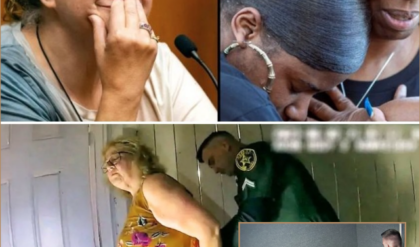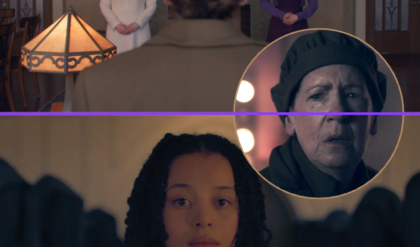Is Dark Winds Based on a True Story? The Real Inspiration Behind the Navajo Detective Thriller
AMC+’s hit series Dark Winds has captured the attention of viewers worldwide with its blend of suspenseful crime drama, spiritual depth, and striking Southwestern landscapes. At its core, the show tells the story of two Navajo police officers, Joe Leaphorn (Zahn McClarnon) and Jim Chee (Kiowa Gordon), as they confront brutal murders and conspiracies in the 1970s Southwest. But many fans are asking: is Dark Winds based on a true story?
The answer lies somewhere between fact and fiction. While the series itself is adapted from the celebrated crime novels of Tony Hillerman, its characters and plots are fictional. However, the backdrop against which these mysteries unfold is deeply rooted in real history — particularly the struggles and injustices endured by Indigenous communities in the United States.
The Books That Inspired the Series
The primary source material for Dark Winds comes from the novels of Tony Hillerman, an acclaimed author whose 18-book series centered on Navajo Tribal Police detectives Joe Leaphorn and Jim Chee. First published in the 1970s, Hillerman’s novels became groundbreaking in their approach, weaving Navajo traditions, beliefs, and landscapes into the fabric of the crime genre.
Though Hillerman was not Native himself, his books earned praise for their respectful portrayal of Navajo culture. The Dark Winds series adapts several of these novels while adding new threads and reimagining others for modern television audiences.
But while the characters and crimes are fictional, the history referenced throughout the show — from assimilation schools to forced sterilization — is tragically real.
Season 1: Grounded in Indigenous History
In the show’s debut season, viewers encounter two haunting pieces of Indigenous history in the United States.
First is the subject of boarding schools. These institutions, often run by the government or religious organizations, forcibly separated Native children from their families with the stated goal of assimilating them into Western culture. Children were forbidden from speaking their language, practicing their traditions, or maintaining ties to their communities. Abuse, neglect, and in some cases death, were tragically common. The trauma of these institutions continues to reverberate in Indigenous communities today.
Second, the show confronts the issue of forced sterilization. In the 1960s and 1970s, Native American women were subjected to sterilization procedures — often without their full consent — as part of a broader program of population control. Investigations later revealed that thousands of women were affected, a policy that has been widely condemned as a violation of human rights.
By embedding these themes into its narrative, Dark Winds grounds its fictional mysteries in a reality that is both historically accurate and emotionally resonant.
Fictional Detectives, Real Struggles

While Leaphorn and Chee are fictional characters, they embody real struggles faced by Native law enforcement officers and community leaders in the 1970s. The era was one of immense tension for Indigenous peoples in the United States, marked by activism, government scrutiny, and ongoing battles over sovereignty and land rights.
By choosing the Navajo Tribal Police as its focal point, Dark Winds sheds light on the delicate balance these officers had to strike: enforcing law and order while also navigating the cultural values and traditions of their own communities.
The crimes at the center of the show — robberies, murders, conspiracies — may be fictional, but the dynamics they reveal about power, corruption, and cultural survival are drawn from real-world experiences.
A “Southwestern Noir”
Director Chris Eyre has described Dark Winds as a “Native American, Southwestern film noir.” That label is telling. While the series borrows the shadowy atmosphere of noir storytelling, it sets its tales against the sunbaked mesas and vast skies of the Southwest, making landscape itself a character.
The noir tone underscores the moral ambiguities of the story — how justice is complicated, how corruption festers, and how truth is never simple. By marrying genre conventions with authentic history, Dark Winds creates something rare: a thriller that entertains while educating.
Why It Matters

What makes Dark Winds stand apart is not just its gripping mysteries, but its insistence on telling Indigenous stories from Indigenous perspectives. The series is produced with significant Native involvement, both behind and in front of the camera, ensuring cultural accuracy and authenticity.
For decades, Hollywood either ignored or caricatured Native peoples, flattening them into stereotypes. Dark Winds instead offers depth and nuance, showing the complexities of Indigenous life in a specific historical moment.
The inclusion of real historical traumas like boarding schools and forced sterilization does more than add dramatic weight — it ensures that these painful truths are not forgotten.
Final Word
So, is Dark Winds based on a true story? Strictly speaking, no — its detectives and central crimes are fictional, adapted from Tony Hillerman’s novels. But the show’s historical backdrop is deeply, painfully real.
By weaving true accounts of systemic injustice into its fictional framework, Dark Winds delivers more than a crime thriller. It offers a reflection on resilience, survival, and the ongoing fight for justice in Indigenous communities.
In the end, the series may not tell a “true story” in the narrowest sense, but it tells a story that carries truth — and that may be even more powerful.





